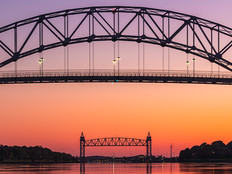NBASE-T Specification Boosts Ethernet Speeds in 10Gbps Era
As wireless devices abound and more users need Wi-Fi access, achieving faster networks has largely required that organizations upgrade to 10 Gigabit Ethernet. What’s more, taking advantage of 802.11ac Wave 2 wireless technology also requires upgrading beyond 1-gigabit-per-second Ethernet.
One challenge, however, is that 10Gbps Ethernet requires CAT 6e cabling. Replacing today’s installed base of CAT 5e and CAT 6 copper wiring can be an expensive proposition. Enter the NBASE-T specifications, which boost the speed of legacy twisted-pair wiring to 2.5Gbps and 5Gbps over distances of up to 100 meters.
A Long History for Gigabit Technology
Formed in 2014, the NBASE-T Alliance works with relevant vendors and now counts more than 40 members. NBASE-T Alliance President Kamal Dalmia points out that gigabit technology and its associated cabling have been around for about 15 years. “All the other [networking] technologies have gone through an evolution, but wired stayed at 1 gig. Wire now becomes the bottleneck.”
That bottleneck is purely physical. “We face the problem that we’re not building new buildings,” says Cisco Systems’ Peter Jones, chairman and vice president of the NBASE-T Alliance. “In general, wireless access points might be upgraded every three to four years, but the cabling will be there till the buildings fall down.”
Percentage of predicted growth in mobile data traffic between 2014 and 2019
SOURCE: Cisco Systems, “VNI Mobile Forecast Highlights,” May 2015
Emerging NBASE-T technology aims to fill the gap. “NBASE-T is a panacea for all those woes,” says Zeus Kerravala, founder and principal analyst at ZK Consulting. “We don’t need 10Gbps for Wi-Fi. We need a couple of gigs,” he says. “For the first time, Wi-Fi is defining wired infrastructure.”
Patrick Hubbard, technical product marketing director for enterprise software maker SolarWinds, says 802.11ac Wave 2 is driving the need for network upgrades.
“802.11ac Wave 2 can handle so many more endpoints per access point that the backhaul is going to have to get a lot faster,” he says.
Equipment Upgrades
Upgrading to 2.5Gbps or 5Gbps Ethernet calls for new switches and wireless access points. Cisco’s Jones says current switches are future-proof and generally support 10Gbps speeds, with backward compatibility to 100Mbps.
State-owned airports, convention centers and other government entities with many endpoints putting pressure on the network may benefit from early adoption of NBASE-T technology, according to Hubbard.
Cable certification is going to be crucial for governments that plan to upgrade their networks with NBASE-T. “If you’re going to pay a vendor to come in and replace switches and endpoints with a bandwidth target in place, it’s helpful to go back and recertify the cable to make sure it’ll support new standards,” Hubbard notes. “That shouldn’t be a guess.”
While NBASE-T technology is still in development, the decision to deploy it might not be a hard one. “This is about being able to connect more devices over wireless without higher cost,” says Kerravala. “It’s a no-brainer.”









